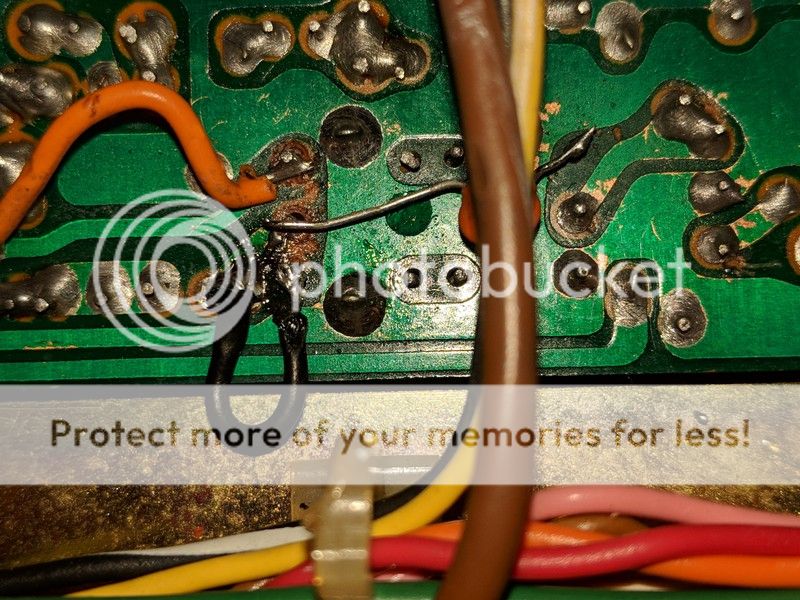Hello.
I could use some help with an 858 Washington.
Some history:
The radio was an eBay purchase. I received it in decent physical condition, but there were issues.
AM and SSB output was low, and a channel LED segment was getting flaky.
There were channel switches for upper and lower channels, but the regular 40 were gone. Seeing as it was beyond my knowledge, I took it to a local shop and he "undid" the extra channels and made it into a straight 40 channel radio again by undoing the jumps and cuts below the PLL.
When I got it back, the regular 40 were restored, but output was still low so I changed out the 2 x ECG236's (one driver, one final) for 2 x 2SC1969's. I also changed out VR15 and 16, VR7 and 8, C179, the AM regulator, the VCO (was an outhouse 458, put in a 945). I restored D23, and D47-(both were clipped).
D46 was intact.
I also found a youtube video wherein a guy with a similar issue changed out D53, so I did as well.
Nothing helps.
Output is still low; so low that AM audio is garbled and SSB is, well, a mess of squeals. I can ALMOST get some decent, halfway intelligible audio out of it, but it seems so touchy.
Driver 1969 is biased at 40 mA, final 1969 at 15 mA. (Thanks unit 399)
No matter how I try to align it, I can't get more than a couple watts out of it.
Looking at the bottom of the board, it appears that L37 was broadbanded, but....I do not recognize exactly how. The butchered job does not look anything like Secrect CB vol5, p 44...is it actually broadbanded? It looks like someone cut a trace above and then jumped it back to undo their mistake. It also looks halfway familiar to the method on Secret CB, but there is also a small ceramic capacitor (marked 82-pf?) jumping from one of L37's taps over toward FET6 I believe, which you can see here:

There is an electrical gap between the black jumper and the solder point of the cap...which looks like half of the broadband mod.....?
I am thinking that if I can "unbroadband" it, maybe I can recapture some wattage on 26.965-27.405. I would be happy to get this gem back to stock.
Can someone help me "unbroadband" this radio? (If it is actually).
If not, any help is appreciated.
I could use some help with an 858 Washington.
Some history:
The radio was an eBay purchase. I received it in decent physical condition, but there were issues.
AM and SSB output was low, and a channel LED segment was getting flaky.
There were channel switches for upper and lower channels, but the regular 40 were gone. Seeing as it was beyond my knowledge, I took it to a local shop and he "undid" the extra channels and made it into a straight 40 channel radio again by undoing the jumps and cuts below the PLL.
When I got it back, the regular 40 were restored, but output was still low so I changed out the 2 x ECG236's (one driver, one final) for 2 x 2SC1969's. I also changed out VR15 and 16, VR7 and 8, C179, the AM regulator, the VCO (was an outhouse 458, put in a 945). I restored D23, and D47-(both were clipped).
D46 was intact.
I also found a youtube video wherein a guy with a similar issue changed out D53, so I did as well.
Nothing helps.
Output is still low; so low that AM audio is garbled and SSB is, well, a mess of squeals. I can ALMOST get some decent, halfway intelligible audio out of it, but it seems so touchy.
Driver 1969 is biased at 40 mA, final 1969 at 15 mA. (Thanks unit 399)
No matter how I try to align it, I can't get more than a couple watts out of it.
Looking at the bottom of the board, it appears that L37 was broadbanded, but....I do not recognize exactly how. The butchered job does not look anything like Secrect CB vol5, p 44...is it actually broadbanded? It looks like someone cut a trace above and then jumped it back to undo their mistake. It also looks halfway familiar to the method on Secret CB, but there is also a small ceramic capacitor (marked 82-pf?) jumping from one of L37's taps over toward FET6 I believe, which you can see here:

There is an electrical gap between the black jumper and the solder point of the cap...which looks like half of the broadband mod.....?
I am thinking that if I can "unbroadband" it, maybe I can recapture some wattage on 26.965-27.405. I would be happy to get this gem back to stock.
Can someone help me "unbroadband" this radio? (If it is actually).
If not, any help is appreciated.

